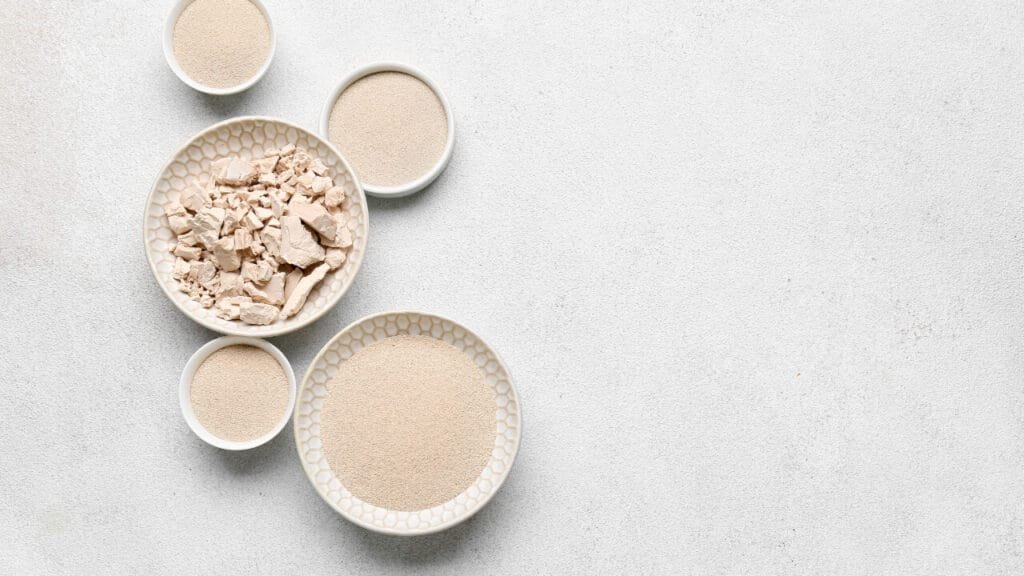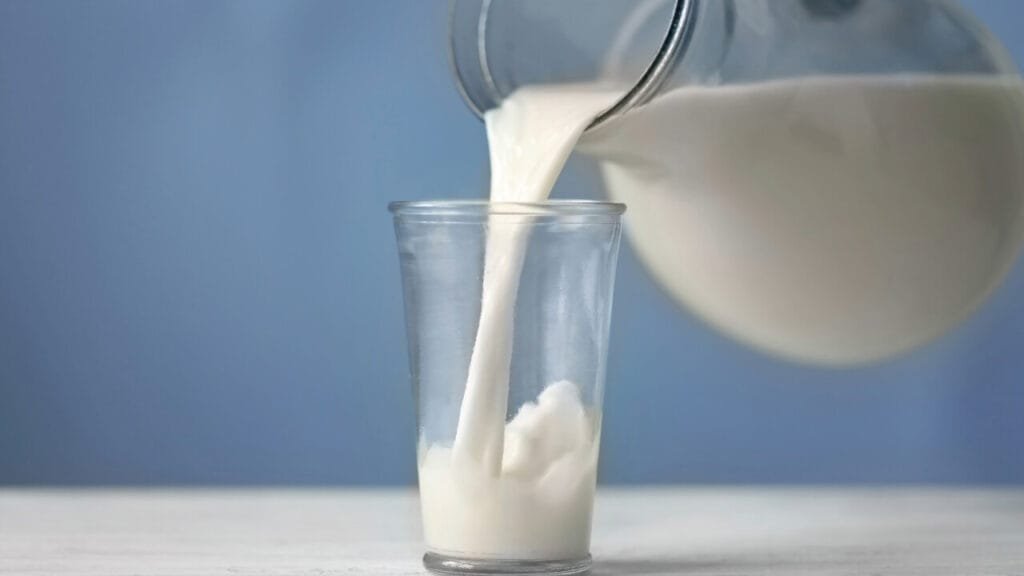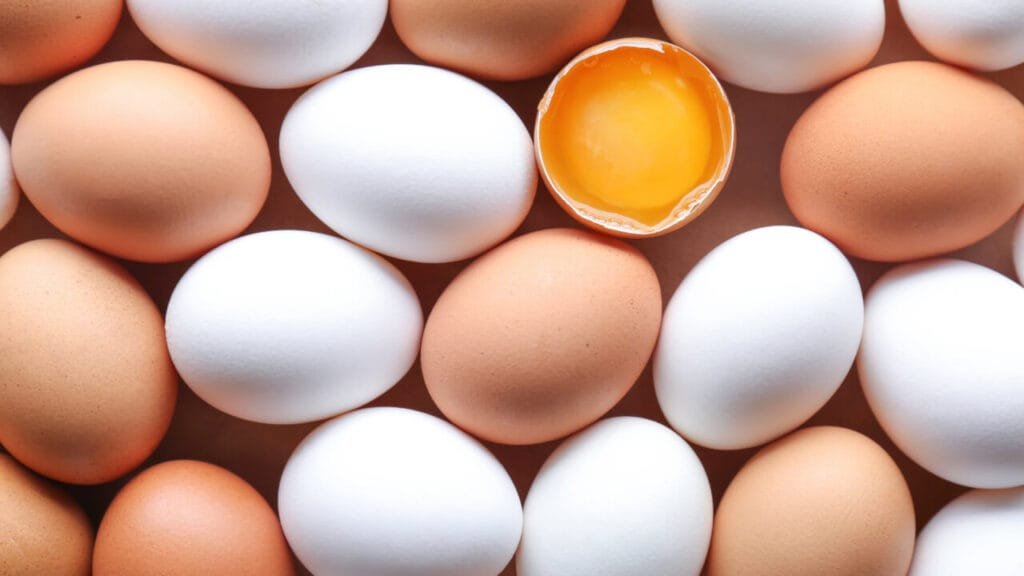
Baking is both an art and a science. Mastering bread making requires a comprehension of each ingredient’s role, from how it affects the texture and flavor to how it can change the overall quality of bread.
We can categorize these ingredients into two bread ingredients list:
- Primary ingredients used in all bread made except unleavened bread, which excludes yeast.
- Secondary ingredients are used in most enriched dough to improve softness and flavor.
With that in mind, on this guide, we will explore these important ingredients in baking bread, and how each functions and affects. Whether you are a beginner or an experienced baker, understanding these factors will help you improve your skills.
Primary Bread Ingredients

Flours
Based on the Compendium of Uses: Wheat flour, or just “flour” without any additional descriptor. Refers to any fine powder derived from a selection of grains or seeds of good to high quality that are purified from impurities and processed for milling.
Composition of Flour
Flour is mainly made up of proteins, starches, fats, minerals, and vitamins, each of which are present in varying amounts and affect the dough in different ways:
- Starch (68-76%): Absorbs water, gelatinizes during baking, and forms the bulk of the structure of bread.
- Proteins (8-15%): T Includes gluten-forming proteins (gliadin & glutenin), which are essential for the elasticity of the dough by giving it strength and chewiness.
- Lipids (1-2%): Contribute to gas retention, improving bread volume and crumb texture.
- Minerals & Vitamins: Play essential roles in enzymatic reactions, fermentation, and the overall nutritional profile of bread.
For more information on flour quality and composition, visit this detailed guide.
Types of Flour
Flour is the most important ingredient in baking bread, and without it, bread cannot be produced. There are many different types of flour, each of which can be used to make different types of bread, and each has unique properties that can affect the texture, structure, and flavors of the final product differently.
Here’s a list of the flours most commonly used in bread making and their effects.
- Bread flour: As the name suggests, bread flour is a flour specially designed for bread making that contains a high protein level, between 12-16%. This high protein content allows the dough to develop a stronger gluten network, resulting in a chewy bread with a perfect shape.
- All-purpose flour: The most versatile flour option, made from a combination of hard and soft wheat with a medium protein level of around 11-12%, making it suitable for a wide variety of loaves. Although this flour is the main ingredient in quick bread recipes and can be used to make most bread types made from lean dough. It can be difficult to use in enriched dough.
- Whole wheat flour: Made from the entire wheat kernel (bran, germ, and endosperm), making it the healthiest flour to use in bread making. Bread made with whole wheat flour tends to be richer in nutrients, has a robust flavor, and a shorter shelf life. Due to its low gluten content and high fiber levels, it produces heavier, denser loaves. For this reason, many bakers often use it in combination with white flour for a more healthy bread with a lighter, fluffier consistency.
- Rye flour: Comes in 3 varieties (white, medium, and dark) with a lower protein content than wheat flour. Rye flour adds a subtle nutty, earthy flavor and creates a denser, whole-grain-like texture. It also improves the nutritional value of the bread.

Leavening Agents
There are two types of leavening agents, biological and chemical. Both are responsible for producing the gas during the baking process that causes the bread to rise.
Biological Leavening Agents
Composed of single celled organisms that need sugar, moisture, and a warm environment to convert sugar and starch into carbon dioxide gas, which makes the bread rise. Here are all the types of biological leavening agents used in bread making:
- Active dry yeast: A type of yeast that undergoes a drying process to reach a dormant state. It is sold in sachets or jars and is commonly used in home bread-making. Before use, active yeast must be activated by dissolving in warm water, ideally at 105ºF (40ºC).
- Instant dry yeast: Used in both professional and home bread baking. It contains smaller granules of active yeast with much higher proportions of live cells per unit volume. Unlike active yeast, instant dry yeast can be mixed directly with other baking ingredients without the need for proofing and takes less time to become active.
- Fresh yeast: Widely used in the bakery industry to prepare bread dough. It is sold in a pressed mold and can mixed with dry ingredients or dissolved in water to distribute it evenly. However, it is important to note that fresh yeast should be kept in the refrigerator before using it.
- Wild yeast: Refers to any yeast that occurs naturally in the environment rather than commercially and is known as sourdough starter. It is made from a mixture of flour and water. Once mixed, these two ingredients begin to ferment and grow wild yeasts and naturally occurring bacteria in the mixture.
- Beer: Although it is not considered an essential leavening agent in bread making. Beer can be used in some recipes that most people recognize as beer bread. The yeast in beer contributes to the fermentation process, while the carbon dioxide create bubbles on the dough. Using beer in bread recipes can impart unique flavors and aromas, making the final product very special.
Chemical Leavening Agents
A mixture or compound that is added to bread dough or batter to produce gases when it reacts with moisture and heat. There are two main chemical leavening agents used in bread-making:
- Baking soda: Also known as sodium bicarbonate. It is a chemical compound commonly used as a leavening agent in quick bread recipes. When combined with an acid (like vinegar, lemon juice, or buttermilk) and moisture, Baking soda produces carbon dioxide gas. This gas helps the batter rise and gives the final product a light, fluffy texture.
- Baking powder: A dry mixture made of a base (typically baking soda) and an acid (usually cream of tartar), along with a moisture-absorbing agent like cornstarch to prevent premature reaction. Once combined with liquid and exposed to high temperature, baking powder releases carbon dioxide gas and creates bubbles in the batter, making the bread rise.

Water
Water is the second essential ingredient in bread dough. It plays several important functions during the kneading process, rising time, and baking.
- Hydration and dough formation: Water hydrates the starch molecules, allowing them to form the gluten network that gives bread its structure and texture. The amount of water used in the dough determines its consistency, whether it’s stiff, soft, or sicky.
- Easily dissolve ingredients such as salt, sugar, and other dry ingredients. Ensures they are evenly distributed in the dough for an even flavor and texture.
- Activation of Yeast: Water allows the yeast to dissolve and penetrate the dough, enabling it to produce gas, which causes the dough to rise. It also regulates the rate of yeast fermentation, which gives bakers control over the fermentation process.
- Dough Elasticity and Extensibility: Water makes the dough more elastic and stretchable, allowing the dough to expand and trap gas bubbles during the fermentation process, giving the bread its volume and airy texture.
- Starch Gelatinization: During baking, the starch granules in flour absorb water, causing them to swell and become gelatinized. This process gives the bread structure and creates a soft and tender crumb.
- Create Steam: Water in the dough turns into steam during baking, helping the bread expand and create a crispy crust. Bakers often add extra steam to the oven, especially when preparing bread that needs a crunchy exterior and chewy texture, like ciabatta and French baguettes.
- Starts the Maillard reaction by dissolving the sugars and proteins in the dough, which turns the crust of the bread brown during the baking process.

Salt
Among the various kinds of salt, sea salt, and rock salt are the best types used in bread. Besides enhancing flavor, salt contributes to the consistency of the dough and increases its elasticity by strengthening the gluten network, allowing it to trap gases produced by yeast, which results in better rise and more uniform crumb structure.
Furthermore, salt moderates the fermentation process, providing more control and even rise. Without salt, the dough rises faster, leading to over proofing and weakening the structure. Salt can also help retain moisture and provide antimicrobial properties that prevent the development of unwanted bacteria and mold, which extends the shelf life of the bread.
It should be noted that the functions of salt can vary depending on the type of flour used. Studies from the Journal of Cereal Science indicate that adding more salt to rye dough increases water absorption, giving it more stretch and volume. But it reduces the volume of bread made with wheat flour, while it does not impact barley dough. For best results, it is recommended to use 0.1-0.2% of the amount of flour for bread made with wheat flour, and 1-5% for bread made with rye and barley flour.
Secondary Bread Ingredients

Sweeteners
Sweeteners in dough increase physical strength, change rheological properties, increase water retention, and soften crumbs. Additionally, they can also improve productivity by increasing the fermentation time and bread temperature during baking and thereby increasing the moisture content of the final product.
In the world of baking, many sweeteners can be used and they all have roughly the same effect. But the most common is sugar:
Sugar plays a multifaceted role in bread making, affecting both the flavor and the physical properties of the bread.
Sugar plays a multifaceted role in bread making as it affects both the flavor and physical properties of bread. Primarily, it adds a sweetness that is necessary to balance other flavors such as the bitterness of whole grains.
It attracts and retains water on the dough, which helps keep the bread moist and soft for longer. It interferes with the gluten network, giving a more tender crumb, which is essential in soft breads like brioche and dinner rolls.
During baking, sugar helps to brown the crust through caramelization and the Maillard reaction, which enhances its color, making bread with a high sugar content brown more quickly.
Other sweeteners used, though not as common as sugar, include:
- Honey imparts a subtle floral sweetness and at the same time helps retain moisture, making baked goods softer and more tender.
- Maple syrup, with its rich, caramel-like undertones, enhances depth and complexity in flavor.
- Molasses offer a bold, slightly bitter sweetness with a deep dark color, adding both richness and visual appeal.

Fats
Adding fats to bread dough can affect everything in bread, from dough handling and texture to flavor, taste, and shelf life.
Fats act as shortening agents. This means they encapsulate the gluten in the dough, preventing it from forming a strong, rigid network and creating a less elastic and more tender dough, resulting in finer, fluffier crumbs rather than a chewy structure.
In addition, fats improve the extensibility and texture of the dough, making it easier to shape and work with, by softening the dough and reducing stickiness, and helping retain moisture inside the bread, making the fortified bread softer and resisting mold for longer.
When fat is added, the point at which the fats are incorporated, and the ability of the dough to absorb is reduced, slowing the development of the gluten network. That is why, it is recommended to add fats after an initial period of gluten development or through an autolyse as mentioned in this enriched dough guide.
Other factors that fats can change are bread flavor and taste. Where each one can impart its own flavors and taste. For example, butter provides a rich, creamy, and sweet flavor, whereas olive oil contributes a mild green fruitiness and peppery note.

Milk
Milk is 85-90% water, along with proteins, fats, and lactose, making it a popular substitute for water in soft bread recipes such as Swiss Zopf, often with a 1:1 ratio. Although this content is mostly water, milk absorbs other ingredients differently than water, tending to be more absorbent than water, resulting in a softer, cotton-like texture in the finished bread.
Both casein and whey proteins in milk affect the nutritional value and texture of bread. On the one hand, they enhance the nutritional value, and on the other hand, they slightly interfere with the structure of the gluten due to their involvement in disulfide exchange reactions. To balance this, bakers tend to heat the milk before using it to balance the amount of this proteins and reduce any negative effects on the structure of the dough, while retaining it benefits in moisture and flavor.
The fat in milk also shortens the gluten strands, limiting their overgrowth, and producing a softer, smoother bread. Lactose contributes to the Maillard reaction, giving the bread a slightly golden crust and mild sweetness. But unlike regular sugar, lactose doesn’t significantly affect fermentation.

Eggs
Eggs enrich bread and dough by boosting protein and fat, which achieve soft, tender crumbs and a smooth texture. The proteins in egg whites coagulate during baking to form a supportive network that traps air and helps create a more tender and chewy crumb, while the fat-rich egg yolks interfere with the growth of gluten, making the dough soft and giving it a tender, moist texture and rich flavor.
The lecithin in eggs, a natural emulsifier with both hydrophilic and hydrophobic properties, helps bind water and fat together, helping the dough to hold together. This dual nature allows lecithin to form a stable emulsion that homogeneously incorporates fat into the aqueous phase of the dough, ensuring that the fat is evenly dispersed and contributes to a soft, moist crumb and better texture, while the proteins in egg whites also add structure by coagulating during baking, further stabilizing the dough matrix and promoting its rise.
Eggs are also widely used to wash bread by beating eggs, often with a small amount of water or milk, and then spreading them on the surface of the bread dough before baking. This technique not only creates a glossy, golden brown crust through the enhanced Maillard and caramelization reactions but also forms a thin, protective layer that helps trap moisture inside, which allows for a smoother and more attractive finish at the same time. Plus, it also helps any toppings adhere better to the dough.




